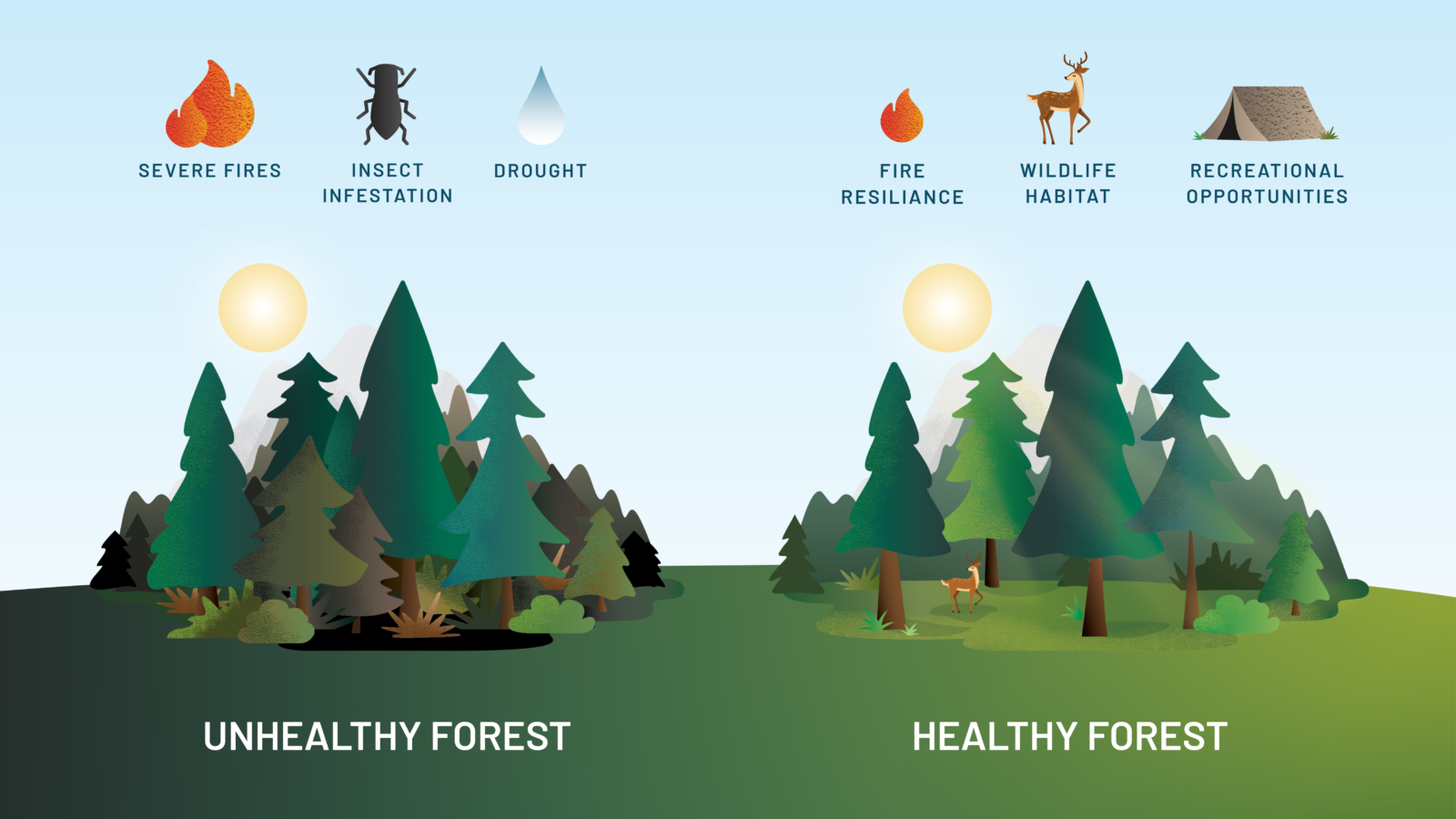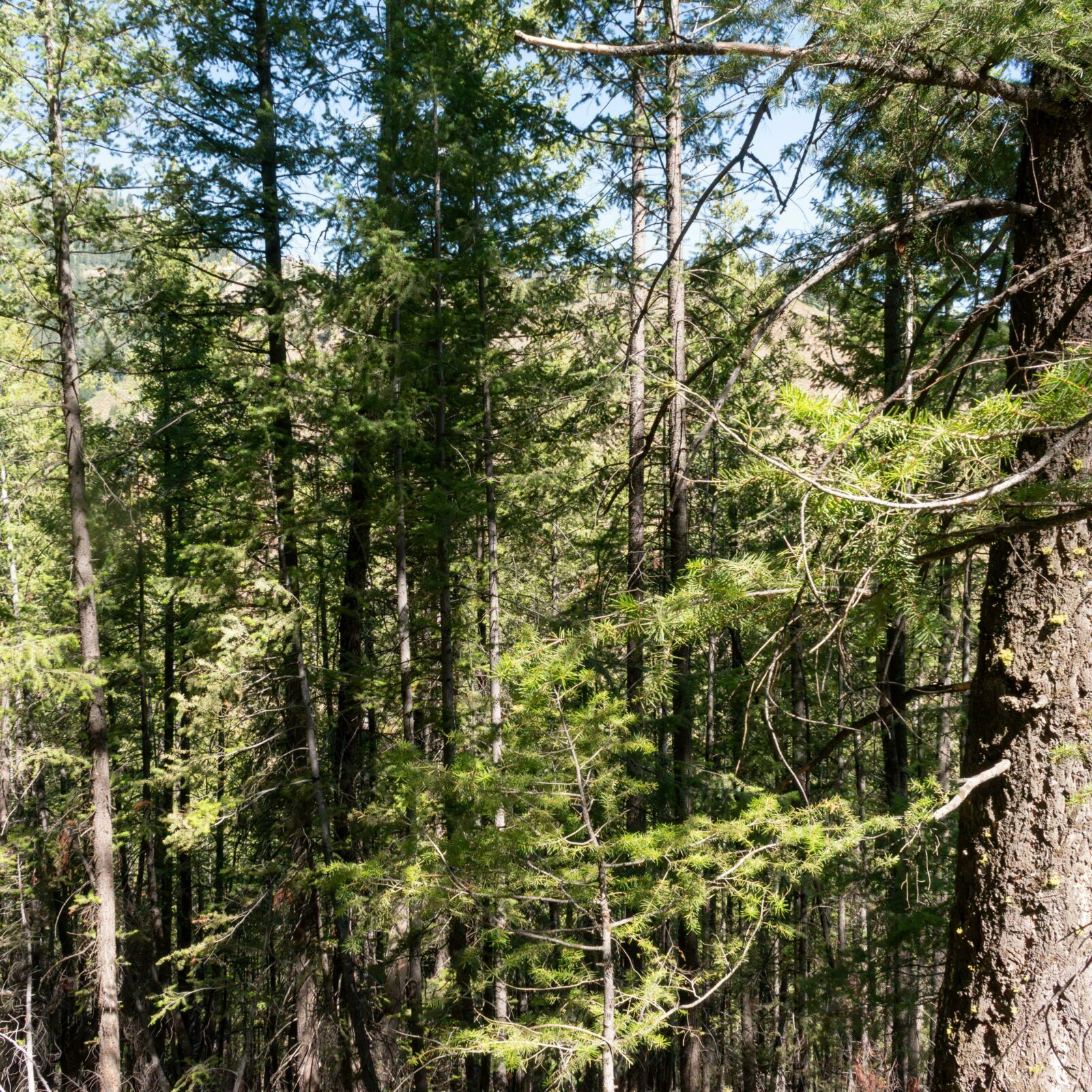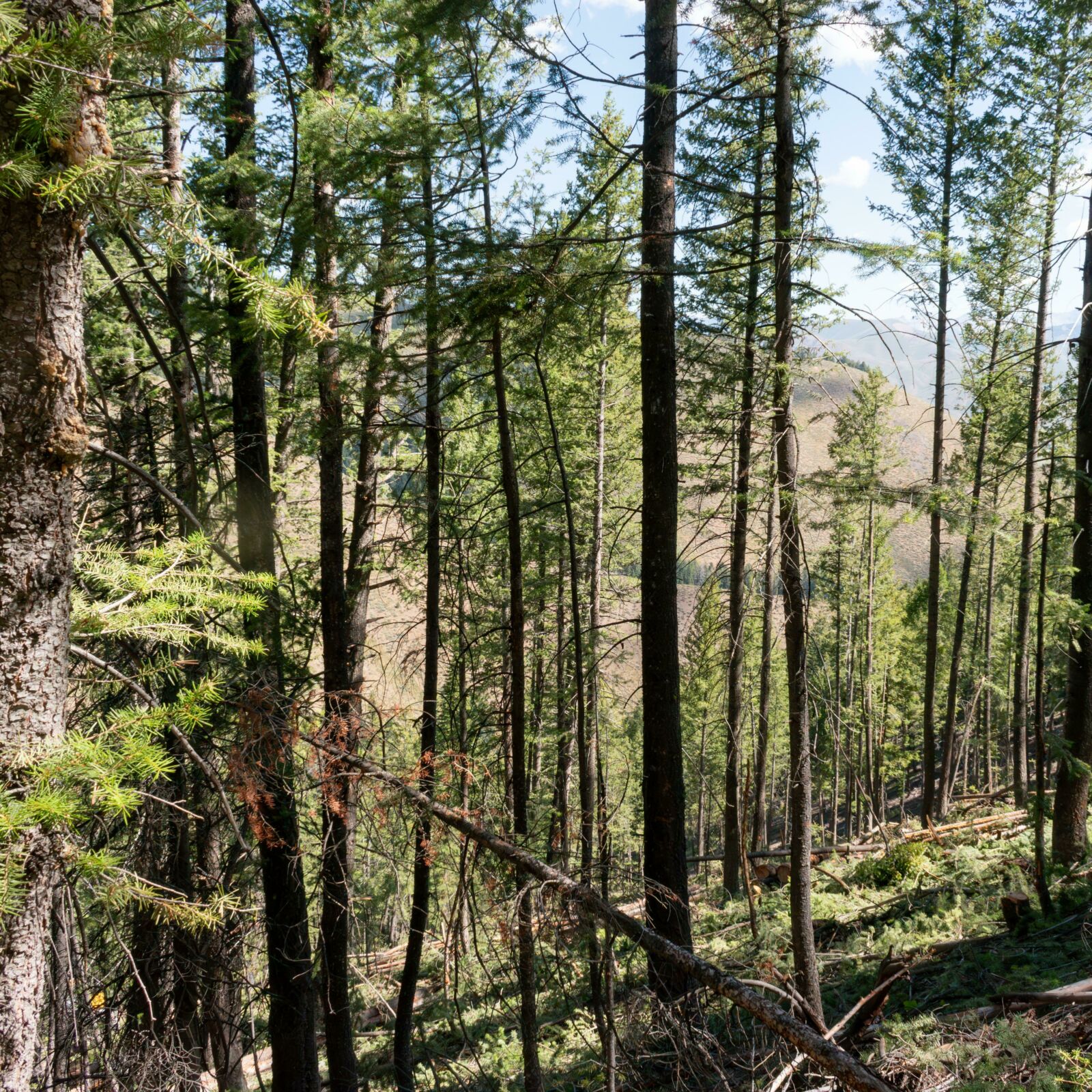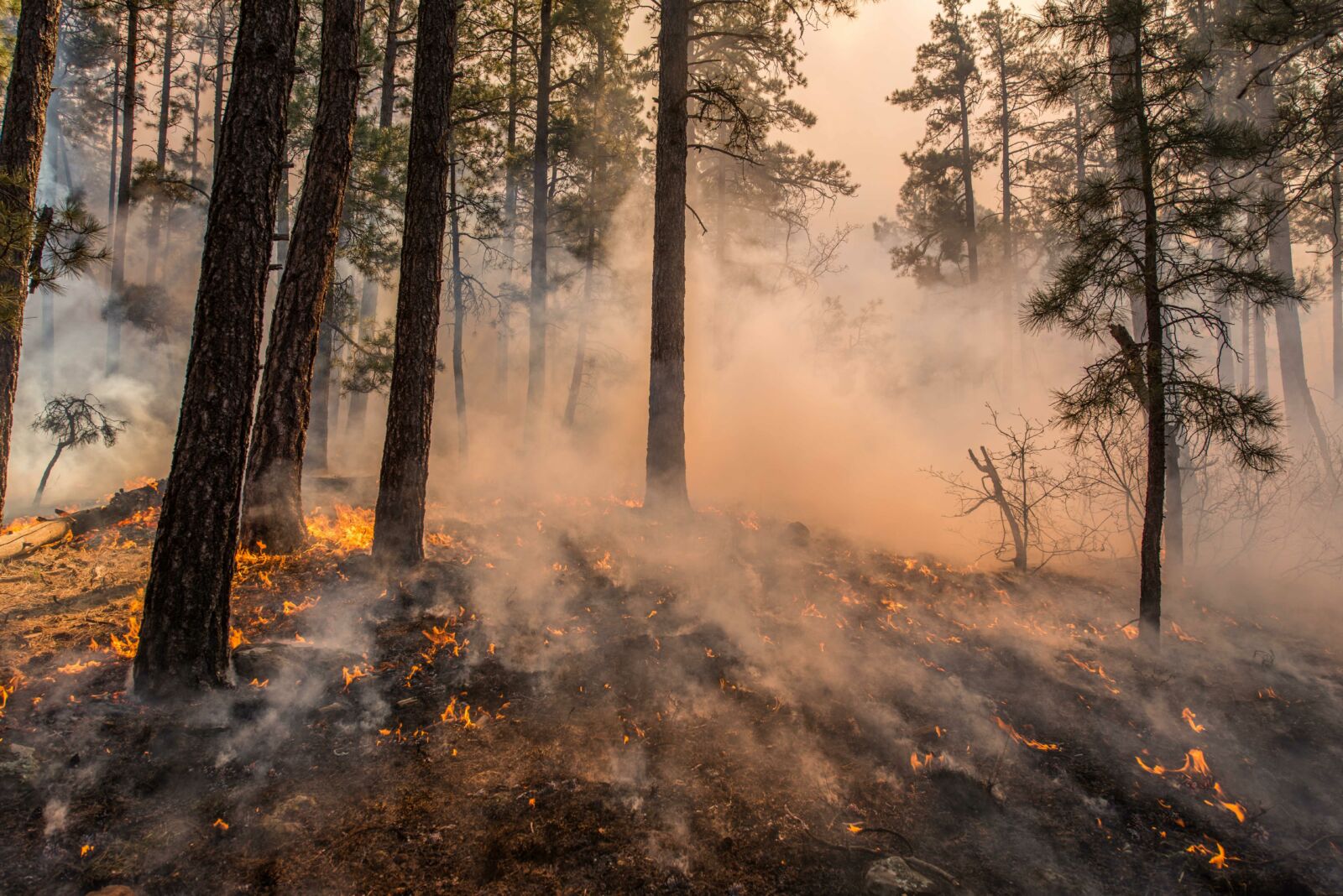To many of us, dense forests seem healthy and natural. But to the trained eyes of a forester, these dense stands indicate that a forest is actually under stress.
How Can a Forest Have Too Many Trees?
For a forest to be healthy and resilient, each tree needs enough nutrients, water, and sunlight to thrive. When trees grow too close together, they have to compete for these resources. This results in weaker trees that are more susceptible to disease, insect infestations, and drought.
Because of these susceptibilities, overstocked forests, or dense forests with too many trees, are prone to high rates of tree mortality. These dead trees then provide fuel for and increase the risk of high-intensity wildfires that can be catastrophic for the forest and surrounding communities. In order to preserve forest health, it is important that each tree has the room and resources it needs to thrive.

What Does an Overstocked Forest Look Like?
Overstocked forests are all around us. In fact, they are so prolific that for many of us dense forests seem normal. While a healthy density looks different for each forest based on their unique environment and ecosystem, on average, healthy forests are much less dense than you are likely used to seeing.

Photo by the NFF.
Overstocked Forest
You can spot an overstocked forest when small trees and dense vegetation prevent larger trees from getting the water and sunlight they need to thrive.

Photo by the NFF.
Healthy Forest
Healthy forests are much less dense, have fewer small trees, and plenty of room between large trees for sunlight to reach the forest floor.
Why Do We Have So Many Overstocked Forests?
If lots of competition between trees is bad for forest health, why are there so many overstocked forests? Isn’t that the way forests naturally grow? Not necessarily. Many of these forests have not naturally grown dense on their own.
Over the last century, strict fire suppression by the U.S. government and other forest managers nearly eliminated wildfires from landscapes where fire was a natural and normal ecological process. While high-severity wildfires pose extreme risk to forest ecosystems, low to moderate-intensity fire plays a key role in reducing understory density in many forest ecosystems.

Photo by Michael McNamara.
Low to moderate-intensity fires stay close to the ground, reducing understory density without destroying larger trees and their canopies.
The result of this strict fire suppression was more overgrown, less resilient forests. From 1911 to 2011, average forest density increased six- to seven-fold and average tree size decreased by 50 percent. With thinner bark to protect them from flames, these smaller trees are less resilient to fire than large trees. Combined with increased competition between trees and decades of overgrown brush to fuel fire, overstocked forests are vulnerable to some of the most catastrophic effects of high-severity wildfires.
Indigenous people have recognized the important ecological role of low-intensity fire and have incorporated burning in their cultural and stewardship practices for centuries. As forest managers’ understanding of fire and its connection to forest density and health has evolved, forest thinning and prescribed burns have become important tools for improving forest health.
Want to learn more? Check out these additional resources from the U.S. Forest Service.
Cover photo by John Rudy.

